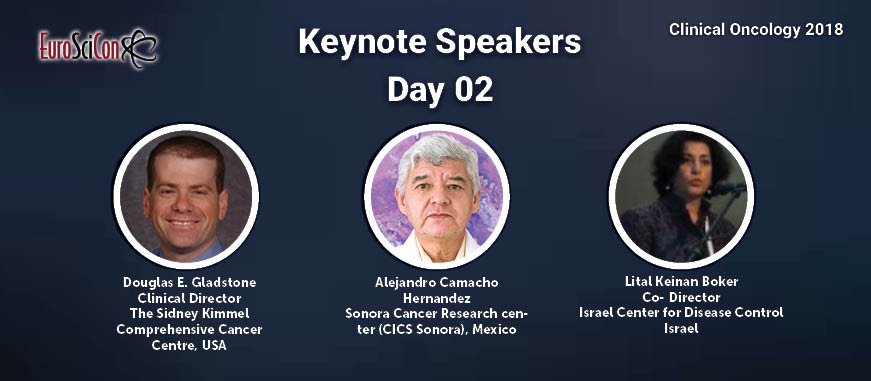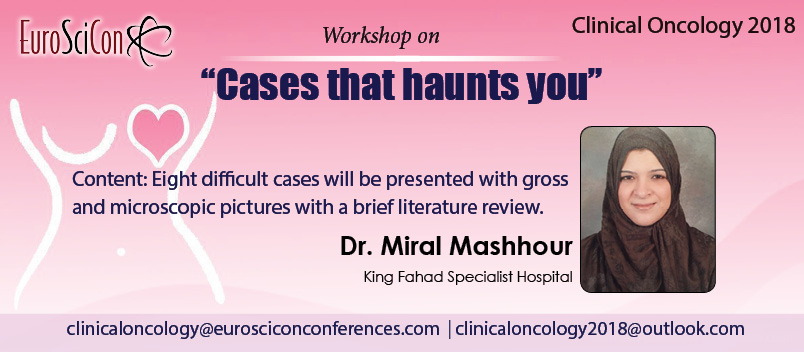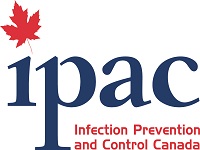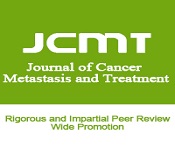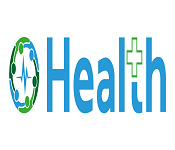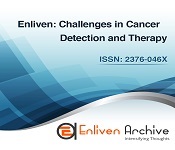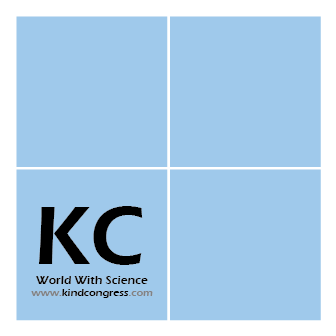Clinical Oncology 2018
ABOUT CONFERENCE
Euroscicon welcomes all the participants from all over the world to attend “2nd Edition of International Conferences on Clinical Oncology and Molecular Diagnostics” during June 11-13, 2018 at Dublin, Ireland. Clinical oncology 2018 aims to gather prominent educational scientists, researchers and instructors to share their experiences and ideas.
As the theme of the conference "Enlightening the Future Panorama of Clinical Oncology", the major discussion points will be based on the novel advancements in clinical oncology. This cancer conference includes prompt keynote presentations, Oral talks, Poster presentations and Exhibitions. The purpose of oncology conference is to promote interest, stimulate research, and promulgate information on all aspects of cancer science.
What’s new?
This cancer conference will have three days of discussions on methods and strategies related to management, quality improvement of Cancer as well as to explore the new ideas and concepts on Prevention, Diagnosis, and Treatment of the Organ-related Cancers and its innovative techniques. This oncology conference gives a chief interdisciplinary stage to experts, professionals and teachers to display and discuss about the latest developments in the fields of Clinical Oncology and Molecular Diagnostic Techniques. It is crucial for oncologists to keep updated of the novel advancements in oncology and management of cancer. Oncology conference enhances the cancer research with goal of increasing cure rates.
About Dublin
Dublin is the capital of the republic of Ireland, located on Ireland’s east coast at the mouth of the River Liffey. Dublin has 1.5 million inhabitants. Alpha ranking is given to Dublin by the Globalization and World Cities Research Network (GaWC) as a global city, which secures one among the top thirty cities in the world. It is a historical and existing centre for education, arts, administration, economy and industry. Its historic buildings include Dublin Castle and magnificent St Patrick’s Cathedral, founded in 1191. City parks encompass landscaped St Stephen’s Green and huge Phoenix Park, containing Dublin Zoo. The National Museum of Ireland explores Irish heritage and culture. In 2018, Dublin Plans to gather prominent educational scientists, researchers and instructors to discuss about the current trends in Clinical Oncology and Molecular Diagnostics.
WELCOME MESSAGE
Dear Colleagues,
On behalf of the organizing committee, I would like to welcome you all to the Second Edition of International Conferences on Clinical Oncology and Molecular Diagnostics. This Conference will be held in the wonderful city of Dublin, Ireland from June 11-13th. Advances in DNA sequencing and molecular imaging have totally transformed how we will be treating cancer patients and this Conference will present many of the exciting advances in clinical oncology. New methodologies to detect cancers at their earliest stages to personalized treatment of cancers based upon their molecular profiles are just some of the advances that will be discussed at this meeting. Come and join us and meet with prominent scientists, researchers and instructors and also enjoy all the history, culture and excitement of the wonderful city of Dublin.

TARGET AUDIENCES
This oncology conference is your best opportunity to meet the gathering of aspirants from the oncological community. We invite to come together and inform each other in an environment conducive to education and interaction.
-
Oncologists
-
Radiologists
-
Pathologists
-
Hematologists
-
Gynecologists
-
Chemotherapists
-
Academicians
-
Research Scholars
-
Student Delegates from Academia
-
Oncology Nurses
-
Hematology Associations/Societies
-
Cancer Associations/ Societies
-
Diagnostics Companies
-
Pharmaceutical Companies
-
Biotechnology Companies
SESSIONS & TRACKS
Oncology
Oncology is a branch of medicine that deals with treatment of tumors. A medical professional who practices oncology is an oncologist. The responsibility of an oncologist is to diagnose, educate and treat patients that are dealing with cancer. The three major areas in the discipline of oncology are Surgical, Medical and Radiation. Medical Oncologists skillful in treatment that uses chemotherapy drugs to kill cancer cells and condense the size of tumors. Surgical Oncologists specialize on using surgery to eradicate cancerous tumors and often a margin of healthy tissue surrounding the tumor. Radiation Oncologists expert in treating cancer with radiation therapy, which kill cancer cells using various radiotherapy machines. The other types of oncologists include gynecologic oncologists, pediatric oncologists and hematologist/oncologist. Gynecologic Oncologists focus on treating women with cancers such as uterine or cervical cancer. Pediatric Oncologists cure children with cancer usually under the age of 18. A Hematologist Oncologist is a doctor who treats blood cancer such as leukemia.
-
Medical Oncology
-
Surgical Oncology
-
Radiation Oncology
-
Pediatric oncology
-
Gynecologic oncology
-
Urologic Oncology
-
Hematology-Oncology
Clinical Oncology
Oncology is a branch of medicine that deals with treatment of tumours. A medical professional who practices oncology is an oncologist. Clinical oncology enfolds the non-surgical aspect of oncology. 85% of all clinical oncologists treat patients with a balance of chemotherapy and radiotherapy. Clinical oncologists are involved in the treatment of all types of cancer. They work intently in large multidisciplinary teams that focus on the treatment of cancer affecting parts of the body or systems. They treat patients and manage their cancer throughout the disease. This specialty gives the opportunity of developing clinical and scientific skills with great potential for academic and clinical research. Technologies in the field of clinical oncology are improving promptly. For example, some tumours can be treated with highly sophisticated precision external beam radiation therapy such as proton beam therapy. Some patients can be cured, but for others the emphasis is on effective palliative care and improving quality of life.
-
Clinical oncologists
-
Non-surgical oncology
-
Clinical trials
-
Cancer biology
Radiation Oncology
Radiation Oncology embraces all aspects of research that influences on the treatment of cancer using radiation. The field of radiation oncology covers the integration of radiation therapy into multimodal treatment approaches. External Beam radiotherapy is delivered outside the body. This includes directing high-energy radiation beams at the area being targeted within the body using various radiotherapy machines. Brachytherapy is radiation applied directly into the target. It is highly effective because the radiation is concentrated on the disease rather than healthy surrounding organs. Radioimmunotherapy (RIT) uses an antibody with specificity for a tumor- associated antigen labeled with a radionuclide to deliver cytotoxic radiation to a tumor cell. Systemic radiation therapy uses radioactive drugs to treat cancer systematically, in which the radioactive substance travels through the blood stream to reach cells all over the body.
-
Radiation physics
-
External Beam radiotherapy
-
Brachytherapy and Radioimmunotherapy
-
Systemic radiation therapy
-
Cancer imaging
-
Palliative Medicine
Organ Specific Cancer
Cancer is one among the primary causes of death all over the world. Organ Specific Cancers are cancers named based on the location of cancer in the parts of the body. There are different types of cancers, some of them are Head and Neck Cancer, Brain cancer, Lung cancer, Oral cancer, Liver cancer, Breast cancer, Prostate cancer, Gastric cancer, Pancreatic cancer, Kidney (Renal Cell) cancer, Leukemia and many more. Lung, prostate, colon, rectum, stomach and liver are the most common organs affected by cancer in men. The most common organs affected by cancer in women are breast, colon, rectum, lung, cervix and stomach.
-
Brain and Paranasal Sinus cancer
-
Head and Neck cancer
-
Thyroid and liver cancer
-
Pancreatic cancer
-
Breast and Cervical cancer
-
Thoracic and Lung cancer
-
Prostate cancer
-
Colorectal cancer
Cancer Metastasis
Cancer that spread to a different part of the body from where it started is called metastasis. For example, a breast cancer that spread to the liver is referred to as metastatic breast cancer. The most common sites where cancer spreads are the bone, liver, and lung. The clinical manifestation of metastasis in a vital organ is the ultimate phase of cancer progression and the main offender of cancer-related mortality.
-
Pathophysiology
-
Organ-Specific Targets
-
Metastatic symptoms
-
Diagnosis & Management
-
Multimodal therapies
Hematology- Oncology
Hematology- Oncology is the branch of medicine related to the study of diagnosis, treatment, and prevention of blood diseases and cancer. It includes such diseases as iron deficiency anemia, hemophilia, sickle cell disease, the thalassemia, leukemias and lymphomas.The study of hematology integrates clinical and laboratory medicine. Leukemia affects your white blood cells. These are significant, infection-fighting part of your immune system, made in your bone marrow. The cancerous formation affecting the lymphocytes is called as lymphoma. Lymphocytes are one of the varieties of white blood corpuscles. As part of Myeloma, the plasma (another variety of WBC) is affected by the cancer cells. Blood cancers can cause many different symptoms. Some are common across all blood cancers, others are more characteristic of types of blood cancer. For example, lymphomas can be recognized by swollen lymph nodes and one of the most common symptoms of myeloma is bone pain, especially in the back.
-
Hematology
-
Lymphoma
-
Leukemia
-
Myeloma
-
Acute and Chronic blood cancer
-
Blood transfusion
Breast Cancer
Breast cancer starts when cells in the breast initiate to grow out of control. These cells typically form a tumor that can often be felt as a lump. If the cells can grow into surrounding tissues or spread to distant areas of the body, the tumor is malignant. The breast cancer which initiate in the ducts that carry milk to the nipple is called ductal cancers. Some breast cancers begin in the glands that make breast milk is called lobular cancers. A small number of cancers start in other tissues in the breast. These cancers are called sarcomas and lymphomas. Benign breast tumors are uncharacteristic growths, but they do not extent outside of the breast and they are not aggressive. But some benign breast lumps can upsurge a woman's risk of getting breast cancer.
-
Ductal cancer
-
Lobular Cancer
-
Sarcomas
-
Lymphomas
-
Benign Breast Cancer
-
Understanding breast cancer diagnosis
-
Breast reconstruction surgery
-
Advancements in breast cancer treatment
Skin Cancer
Skin cancers are cancers that develop from the skin. They are due to the progression of abnormal cells that can invade or spread to other parts of the body. Skin cancer is the most common form of cancer, globally accounting for at least 40% of cases. The most common type is non-melanoma skin cancer, which happens in at least 2-3 million people per year. There are three main types of skin cancers: basal-cell skin cancer (BCC), squamous-cell skin cancer (SCC) and melanoma. The lymphomas that start in the skin are called skin lymphoma. surgical excision is the most common form of treatment for skin cancers. About 90 percent of nonmelanoma skin cancers are assisted with exposure to ultraviolet (UV) radiation from the sun. Sunscreen is effective and thus recommended to avert melanoma and squamous-cell carcinoma.
-
Basal cell skin cancer
-
Squamous cell skin cancer
-
Skin lymphoma
-
Melanoma
-
Signs and Symptoms
Cancer Biomarkers
Biomarkers are molecules that indicate normal or abnormal process occur in your body. Biomarkers may be produced by the cancer tissue itself or by other cells in the body in response to cancer. It is especially used for the identification of breast cancer. They can be found in the blood, stool, urine, tumor tissue and bodily fluids. Cancer biomarkers can include Proteins, Gene mutations (changes), Gene rearrangements, Extra copies of genes, Missing genes and Other Molecules Biomarkers helps in cancer research to diagnose the early stage cancers, find out the aggressiveness and develop cancer drugs.
-
Diagnosis and Risk assessment
-
Prognosis and Treatment
-
Biomarkers in cancer research
-
Biomarkers in drug development
Oncogenomics
The sub-division of genomics that characterizes cancer-associated genes is related to oncogenomics. It focuses on epigenomic, genomic and transcript alterations in cancer. The evolution from normal tissue to aggressive cancer is thought to occur over a timescale of 5–20 years. This transformation is determined by both inherited genetic factors and somatic genetic alterations and mutations, and it results in uncontrolled cell growth and leads to death. The genetic mutations that lead to cancer occur only in certain genes. Cancer-causing genes have been classified as proto-oncogenes (e.g., the genes for MYC, ERBB2 and EGFR) and tumor suppressor genes such as the genes that encode TP53, CDKN2A, and RB. The completion of the Human Genome Project simplified the field of oncogenomic and improved the abilities of researchers to find oncogenes. Sequencing technologies and global methylation profiling methods are practiced to the study of oncogenomics.
-
Tumor suppressor genes
-
Functional analysis of oncogene
-
Heredity cancer syndrome
-
Carcinogenic driver mutation
-
Databases for cancer research
Cancer Screening
Screening tests can help to find cancer at an early stage, before recognizing the symptoms. When abnormal tissue or cancer is found early, it may be easier to treat or cure. The main aim of cancer screening is to reduce the mortality rate. Each type of cancer has its own screening test through which the pathologist can identifies the precancerous or cancerous cells. Lung cancer is screened by using spiral computed tomography technique. Mammography and Magnetic resonance imaging methods are used to screen the breast cancer. Human Papillomavirus testing and pap test are used to find out the cervical cancer. The techniques practice to screen the colorectal cancer are colonoscopy, sigmoidoscopy and fecal occult blood test. Screening tests must be safe, well-tolerated and effective with appropriately low rates of false positive and false negative results. Screening has many risks such as over diagnosis, false positives, increased testing and false assurance.
-
Mammography
-
Sigmoidoscopy
-
Colonoscopy
-
Nuclear imaging
-
Screening test
-
Benefits of screening
-
Risks of screening
Cancer Biopsy
Biopsy is the removal of small amount of tissue or sample of cells from your body for examination under a microscope. Other diagnostic techniques can suggest that cancer is present, but only a biopsy can make a definite diagnosis. The removal of entire lump or suspicious area is called an excisional biopsy. A larger needle with a cutting tip is used to draw a column of tissue out of a suspicious area is called core needle biopsy. In Vacuum-assisted biopsy, the suction device is used to collect the sample which increases the amount of fluid and cell that is extracted through the needle. Endoscopic biopsy is most often used in gastric cancers to remove the tissues for examination. The removal of small amount of solid tissue from a bone marrow using a needle is called bone marrow biopsy. This method is used to find out if a person has a blood cancer. Blood cancers include leukemia, lymphoma, or multiple myeloma. The combination of an imaging procedure such as X-ray, computerized tomography (CT), magnetic resonance imaging (MRI) or ultrasound with a needle biopsy is known as Image-guided biopsy.
-
Analysis of biopsied materials
-
Precancerous conditions
-
Genetic test for diagnosis
Chemotherapy
Chemotherapy is a type of cancer treatment that uses chemotherapeutic drugs to destroy the tumor cells. A doctor who specializes in treating cancer with medication, called a medical oncologist. The chemotherapy which is used before surgery or radiation to shrink a tumor is known as neoadjuvant chemotherapy and after surgery or radiation to kill any remaining cancer cell is known as adjuvant chemotherapy. In intravenous chemotherapy, chemotherapeutic agents are given directly into vein to reach the tumor cells. Oral chemotherapy is usually taken in the form of a pill or capsule. Chemotherapeutic drugs are injected into an artery to treat the cancer is called intra-arterial chemotherapy (IA chemotherapy). Topical Chemotherapy is a cream or lotion applied directly to treat the skin cancer. When chemotherapeutic agents travel through the bloodstream to reach cells throughout the body, it is called systemic chemotherapy. When chemotherapeutic drugs are directed to a specific area of the body, it is called regional chemotherapy. These treatment cures many types of cancer effectively, but also cause different side effects.
-
Chemotherapeutic drugs
-
Neoadjuvant and adjuvant chemotherapy
-
Intravenous chemotherapy
-
Oral chemotherapy
-
Topical Chemotherapy
-
Intra-arterial chemotherapy
-
Systemic and regional chemotherapy
-
Side effects of chemotherapy
Molecular Diagnosis and Diagnostics
Molecular diagnosis is evolving as a new and eye-opening methodology that merges proteomics and genomics for early detection and diagnosis of cancer. Genomics and proteomics tools are used to detect distinctive molecular signatures like changes in gene expressions, protein biomarker profiles, genetic and epigenetic signatures and other metabolite profile changes. This allows to identify the combinations of biomarkers which may sense the presence or risk of cancer or monitor cancer therapies. sometimes mutations occur in oncogenes, such as KRAS and CTNNB1(β-catenin). Investigating the molecular signature of cancerous cells i.e. the DNA and its levels of expression via messenger RNA aids physicians to characterize the cancer and to choose the best therapy for their patients
-
Micro array Chips
-
Polymerase chain reaction
-
Micro RNA molecules
-
Fluorescence in situ hybridization
Cancer Drugs are used for treating cancer and relieving symptoms of the cancer (e.g. pain), and side-effects, such as nausea. Doctors treat cancer with two or more chemotherapy drugs and sometimes with other medicines, such as steroids or biological therapies. Anti-cancer drugs eradicate cancer cells by stopping growth or multiplication at some point in their life cycles. Vaccines are medicines that enhance the immune system's natural ability to protect the body against “foreign invaders,” mainly infectious agents, that may cause disease. HPV vaccine and Hepatitis B vaccine are cancer prevention vaccines approved by the U.S. Food and Drug Administration (FDA). Cancer treatment vaccines are called therapeutic vaccines, which increase the ability of immune system to recognize and destroy the antigens.
-
Immunotherapy
-
Prophylactic vaccines
-
Cancer treatment vaccine
-
Clinical trials
Complementary and Alternative Medicine
Alternative cancer treatments cannot help in curing your cancer, but help to relieve symptoms and improve quality of life during cancer treatment. Common signs and symptoms such as anxiety, fatigue, nausea and vomiting, pain, difficulty sleeping, and stress may be lessened by alternative treatments. Integrating the best of evidence-based complementary and alternative cancer treatments with the treatments you receive from your doctor may help relieve many of the symptoms associated with cancer and its treatment. Ayurvedic, Homeopathy, Acupuncture, Aromatherapy, Exercise, Hypnosis and Music therapy are examples of complementary and alternative medicine therapies which help to cope with side effects of cancer treatments.
-
Ayurvedic treatment for cancer
-
Homeopathy
-
Acupuncture and Aromatherapy
-
Hypnosis and music Therapy
Oncology Nursing and Care
A nursing professional who specializes in caring for people with cancer is an Oncology nurse. They monitor physical conditions, prescribe medication, and administer chemotherapy and other treatments. Oncology is one of the most challenging and gratifying fields in nursing. The scope of oncology nursing extents from prevention and early stage diagnosis to treatment (such as surgical oncology, radiation oncology, medical oncology) through symptom management and palliative care. Oncology nurses have a cancer-specific knowledge base and clinical specialize in cancer. Oncology nurses must inspect numerous details about each patient and they must tend to several patients each day. One mistake could affect a patient’s health, so their attention to detail is critical.
-
Palliative care
-
Symptom management
-
Oncology nursing education
Cancer Epigenetics
The study of epigenetic modifications to the genome of cancer cells that do not include a change in the nucleotide sequence is known as Cancer Epigenetics. Epigenetic alterations are as important as genetic mutations in a cell's transformation to cancer and their manipulation embraces great potential for cancer prevention, detection, and therapy. A variety of compounds are considered as epigenetic carcinogens such as arsenite, diethylstilbestrol, hexachlorobenzene and nickel compounds. They result in an increased incidence of tumors, but they do not show mutagen activity.
-
DNA Methylation
-
Histone modification
-
MicroRNA gene silencing
-
Epigenetic carcinogens
Cancer Prevention: Mode of Existence
Around 330,000 people are analyzed with cancer each year and 161,000 will die, according to statistics from Cancer Research UK. Cancer is caused by both internal factors (such as hormones, inherited mutations and immune conditions) and environmental factors. The important lifestyle factors include alcohol, tobacco, diet, obesity, infectious agents, environmental pollutants, and radiation increase the mortality of cancer. Tobacco use increases the threat of developing at least 14 types of cancer. The chronic alcohol consumption is a risk factor for cancers of the upper aero digestive tract, including cancers of the oral cavity, pharynx, hypopharynx, larynx, and esophagus. Numerous air pollutants such as PAHs (polycyclic aromatic hydrocarbons) increase the risk of lung cancer. Some cancer cases may be persuaded by ultraviolet (UV), pulsed electromagnetic fields and radiation. Diet is linked to cancer deaths in colorectal cancer cases. The lesser hereditary impact of cancer and the modifiable nature of the environmental factors direct to the preventability of cancer
-
Alcohol and Tobacco
-
Diet and Obesity
-
Environmental pollutants
-
Radiation
Cancer Epidemiology
The study of factors affecting cancer is known as cancer epidemiology. It helps to infer possible trends and causes. The study of cancer epidemiology uses epidemiological approaches to discover the cause of cancer and to classify and develop improved treatments. Observational epidemiological studies that show relation between risk factors and specific cancers mostly aid to generate hypotheses about potential interventions that could reduce morbidity or cancer incidence. Randomized controlled trials then test whether hypotheses generated by epidemiological studies and laboratory research result in reduced cancer incidence and mortality. In many instances, results from observational epidemiological studies are not confirmed by randomized controlled trials.
-
Randomized Controlled Trials
-
Observational epidemiological studies
-
Mortality and Morbidity
-
Risk Factors
MARKET ANALYSIS
Cancer is a disease characterized by the abandoned growth and spread of abnormal cells. If the growth of abnormal cells is not controlled, it can result in death. In Worldwide, one in seven deaths is due to cancer. cancer causes more deaths than AIDS, tuberculosis, and malaria. According to income when countries are grouped, cancer is the second leading cause of death in high-income countries (following cardiovascular diseases) and the third leading cause of death in low- and middle-income countries (following cardiovascular diseases and infectious and parasitic diseases).
Why to attend?
Clinical Oncology is a multi-disciplinary approach in providing radiation oncology, medical oncology and palliative care. Much effort and research have been extended over the past 3 years about the future of the practice of oncology. It is projected that a significant scarcity of qualified oncology and hematology health care professionals by 2020. It can be evaded by finding and practicing the novel advancements in the cancer research. This oncology conference will provide an unprecedented opportunity for oncologists of all stripes and colors to share their research with colleagues, and discuss and debate the latest advances in the field of Clinical Oncology and Molecular Diagnostics.
Cancer Diagnostics Market:
The global market size of cancer diagnostics is expected to reach $13.1 billion by 2020 from $7.1 billion in 2015 and is predicted to raise at a CAGR of 12.9% over the forecast period. Growing prevalence of oncologic cases, constant technological innovations in diagnostics, and increasing requirement for effective screening tests are some of the main factors prompting the demand for screening tools across the world.
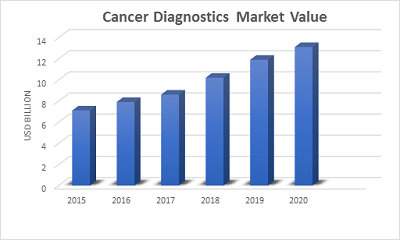
Rising awareness and supportive government enterprises are some other factors that are anticipated to increase the growth of the sector during the forecast period. The global cancer diagnostics market is fragmented based on technology, application, and region. Increase in aging population and cancer cases are likely to create huge opportunity for cancer diagnostics.
Cancer Diagnostic Market, By Technology
On the basis of technology, the cancer diagnostics market is divided into instrument-based and platform-based. In 2015, the instrument-based segment is predicted to account for a major share of the cancer diagnostics market, by product.
1) Platform Based:
-
In situ Hybridization
-
Flow Cytometry
-
Next-generation Sequencing
-
Microarrays
-
Others
2) Instrument Based:
-
Biopsy
-
Mammography
-
PET
-
Ultrasound
-
MRI
-
CT
Cancer Diagnostic Market, By Application
Based on the application, the diagnostics market is fragmented into breast cancer, lung cancer, colorectal cancer, melanoma, Leukemia and others. Breast cancer application is expected to account for a major portion of the cancer diagnostics market.
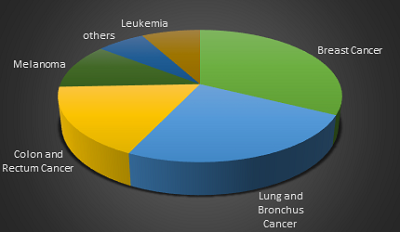
Cancer Diagnostic Market, By Region
Based on region, the cancer diagnostics market is classified into North America, Europe, Asia, and Rest of the World. Rest of the World includes Latin America, Pacific countries, and Middle East and Africa. North America is predicted as the largest share in the cancer diagnostics market, followed by Europe and Asia.
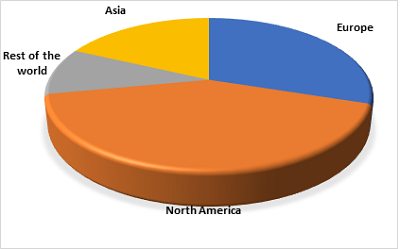
Some of the major performers in the global cancer diagnostics system market are:
-
Abbott Laboratories, Inc.
-
Agilent Technologies, Inc.
-
Thermo Fisher Scientific, Inc.
-
llumina, Inc.
-
Dickinson and Company
-
GE Healthcare
-
QIAGEN N.V.
-
Roche Diagnostics
-
Siemens Healthcare
-
Philips Healthcare
-
C.R. Bard, Inc.
-
Abbvie
-
Biogen
-
Beiersdorf, Inc.
-
Biocodex Usa
-
Danco Laboratories
-
Dara Biosciences, Inc.
-
Dava Pharmaceuticals, Inc.
-
Hemispherx Biopharma, Inc.
-
Heron Therapeutics
-
Hill Dermaceuticals, Inc
-
Janssen Pharmaceuticals, Inc.
-
Orexo U.S., Inc.
-
Meda Pharmaceuticals
-
Salix Pharmaceuticals, Inc.
-
Navidea Biopharmaceuticals
-
Vanda Pharmaceuticals, Inc.
-
Vansen Pharma Inc.
Major Cancer Association Across the globe:
-
American Association for cancer research
-
American Neuroma Association
-
Cancer Research Institute
-
Irish Cancer Society
-
National Cancer Society of Malaysia
-
National Cancer Institute
-
Cancer Research UK
-
Association of oncology Social work
-
The Association for Cancer Surgery (BASO)
-
Global Initiative against HPV and Cervical Cancer
-
Global Lung Cancer Coalition (GLCC)
-
International Gynecologic Cancer Society
-
Cancer Council Australia
-
Australian Cancer Research Foundation
-
Australian Cancer Foundation
-
Prostate Cancer Foundation of Australia
-
National Breast Cancer Foundation
-
Lung Foundation Australia
-
Kids with Cancer Foundation
-
Australian Cervical Cancer Foundation
-
Cure Cancer Australia Foundation
-
Clinical Oncology Society of Australia
-
Ovarian Cancer Australia
-
Children’s Cancer Foundation
-
Australian Gynecological Cancer Foundation
-
Cure Brain Cancer Foundation
Top Universities related to cancer:
-
Harvard University
-
University of Cambridge
-
University of Oxford
-
Yale University
-
University of Texas M.D. Anderson Cancer Center
-
Wake Forest University Baptist Comprehensive Cancer Center
-
Princess Margaret Cancer Centre, University Health Network
-
Stanford University
-
Duke University
-
University of Nebraska Medical Center
-
University of Sheffield
-
University of Manchester
-
University of Lisbon
-
King's College London
-
Newcastle University
-
University of Nottingham
-
University of Glasgow
-
University of Milan
-
University of Alabama School of Medicine
-
Keck School of Medicine of University of Southern California
-
Loma Linda University School of Medicine
-
University of California, San Diego School of Medicine
-
University of Arizona College of Medicine – Tucson
-
California North State University College of Medicine

